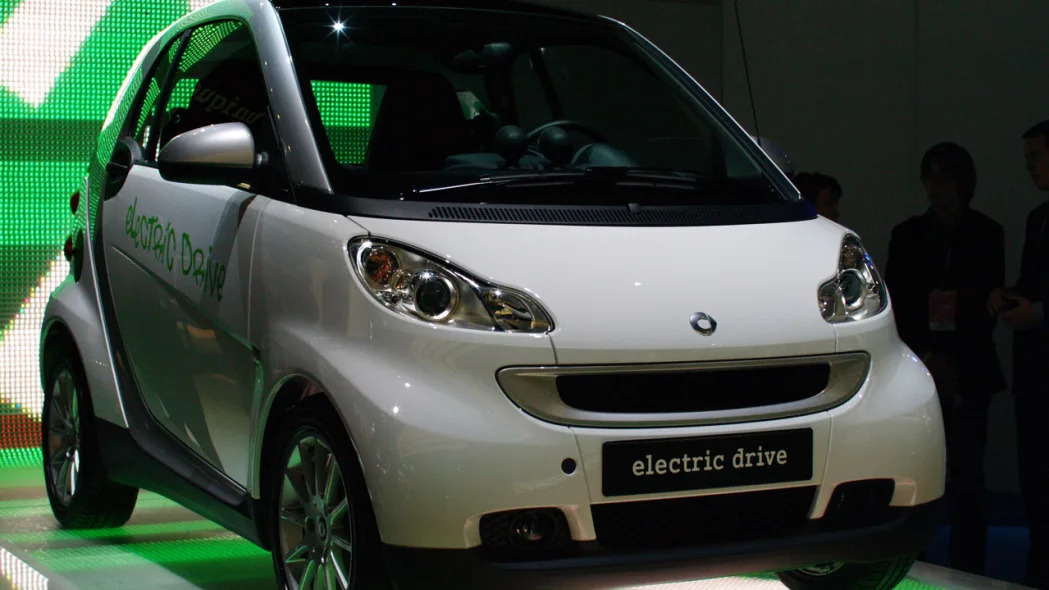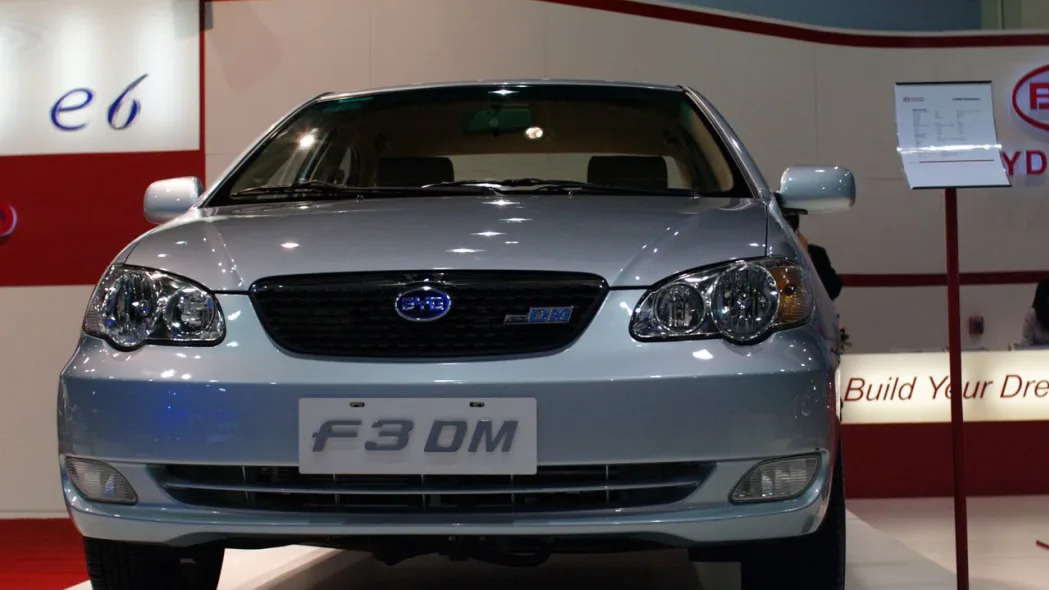In my first column reality checking the Detroit Auto Show, some of you questioned my assertion that even Toyota's relatively high-volume hybrids are probably not profitable. Of course, Toyota has lowered the costs of its Hybrid Synergy Drive components over many years and hundreds of thousands of units. But I believe they're still too high for any Toyota Hybrid - even the Prius or the soon-to-come higher-priced Lexus HS 250h - to turn a profit.
I can't prove it - Toyota is not about to share its cost numbers with me or anyone else - but that's my opinion, and these are "opinion" columns. Yours may differ, and yours may be right. But I'll bet no one outside of Toyota knows for sure.
What most folks outside the industry don't see or comprehend are the enormous costs of designing, testing, developing and validating every one of the thousands of parts and pieces that go into every modern vehicle. Beyond the mostly expensive and relatively low-volume hybrid system components themselves are all the Prius' specific body, chassis, electrical and comfort and convenience parts and pieces, few of which are shared with other vehicles. The addition of the new Lexus HS 250h on the same architecture will help by raising the volumes of parts that are shared, but I doubt whether even that will turn a profit at its higher prices but much lower volumes.
Am I suggesting that Toyota is fibbing by claiming that Prius is profitable? It depends on how they calculate their costs. If they add up the costs of all those parts and pieces - including the still very expensive battery, EVT transmission, motors, wiring, control systems and more - and toss in the relatively minor cost of assembly, the total may indeed be less than the Prius' average selling price. But they would have to discount all those years and huge costs of design, testing, development and validation, which must be spread out ("amortized") over hundreds of thousands, even millions, of units. Their business plan has depended on long-term profitability from growing sales of higher-priced luxury hybrids and sales of the Synergy drive system to other OEMs, neither of which has fared as well as hoped.
What I don't understand is why Prius' profitability seems so important to some ABG readers. If each unit sold does make a buck, bully for them. If not, so what? Toyota's whole hybrid program is still a hugely profitable investment as one of the best-ever image-building efforts any automaker has ever carried out. Whatever they have spent on it through the years is worth far more than any amount of paid advertising they could have bought for similar money. What should be important to potential owners is whether any EV's or HEV's selling price is worth the long-term gas savings it offers, whatever its cost to its manufacturer.
That said, let's reality check some other electrically-powered vehicles showcased at this year's Detroit North American International Auto Show. Follow us after the jump.
BMW X6 and 7 Series Hybrids
BMW will offer two production hybrids by the end of 2009. The first, a 2-Mode (GM's technology, co-developed with BMW, Daimler and Chrysler) hybrid version of its large, heavy, oddly proportioned coupe/sedan X6 crossover, promises "about 20%" better fuel efficiency than its conventional counterpart. The second, a "mild" hybrid version of its all-new 7 Series luxury sedan, adds a 20-hp electric motor to its 4.4-liter twin-turbo V-8 to "significantly reduce both fuel consumption and emissions."
For real? Very.
U.S. annual sales? 20-30K each.
Profitable? Maybe break-even. While the 2-Mode powertrain is seriously expensive, BMW is one of few brands able to charge serious money for every car it sells. The much less costly mild hybrid 7 Series sedan has a better chance.
I can't prove it - Toyota is not about to share its cost numbers with me or anyone else - but that's my opinion, and these are "opinion" columns. Yours may differ, and yours may be right. But I'll bet no one outside of Toyota knows for sure.
What most folks outside the industry don't see or comprehend are the enormous costs of designing, testing, developing and validating every one of the thousands of parts and pieces that go into every modern vehicle. Beyond the mostly expensive and relatively low-volume hybrid system components themselves are all the Prius' specific body, chassis, electrical and comfort and convenience parts and pieces, few of which are shared with other vehicles. The addition of the new Lexus HS 250h on the same architecture will help by raising the volumes of parts that are shared, but I doubt whether even that will turn a profit at its higher prices but much lower volumes.
Am I suggesting that Toyota is fibbing by claiming that Prius is profitable? It depends on how they calculate their costs. If they add up the costs of all those parts and pieces - including the still very expensive battery, EVT transmission, motors, wiring, control systems and more - and toss in the relatively minor cost of assembly, the total may indeed be less than the Prius' average selling price. But they would have to discount all those years and huge costs of design, testing, development and validation, which must be spread out ("amortized") over hundreds of thousands, even millions, of units. Their business plan has depended on long-term profitability from growing sales of higher-priced luxury hybrids and sales of the Synergy drive system to other OEMs, neither of which has fared as well as hoped.
What I don't understand is why Prius' profitability seems so important to some ABG readers. If each unit sold does make a buck, bully for them. If not, so what? Toyota's whole hybrid program is still a hugely profitable investment as one of the best-ever image-building efforts any automaker has ever carried out. Whatever they have spent on it through the years is worth far more than any amount of paid advertising they could have bought for similar money. What should be important to potential owners is whether any EV's or HEV's selling price is worth the long-term gas savings it offers, whatever its cost to its manufacturer.
That said, let's reality check some other electrically-powered vehicles showcased at this year's Detroit North American International Auto Show. Follow us after the jump.
BMW X6 and 7 Series Hybrids
BMW will offer two production hybrids by the end of 2009. The first, a 2-Mode (GM's technology, co-developed with BMW, Daimler and Chrysler) hybrid version of its large, heavy, oddly proportioned coupe/sedan X6 crossover, promises "about 20%" better fuel efficiency than its conventional counterpart. The second, a "mild" hybrid version of its all-new 7 Series luxury sedan, adds a 20-hp electric motor to its 4.4-liter twin-turbo V-8 to "significantly reduce both fuel consumption and emissions."
For real? Very.
U.S. annual sales? 20-30K each.
Profitable? Maybe break-even. While the 2-Mode powertrain is seriously expensive, BMW is one of few brands able to charge serious money for every car it sells. The much less costly mild hybrid 7 Series sedan has a better chance.
Mercedes Benz BlueZero concept
Sort of an upscale Teutonic Volt, this 5-door hatchback was shown as a battery EV in Detroit but - like GM's E-Flex architecture - is designed to carry either a small gasoline engine or a fuel cell to generate electricity to keep it going beyond its battery's limited range.
For real? Could reach production, but not soon.
U.S. annual sales? Maybe 10-20K
Profitable? Could sell in small numbers for large dollars (see BMW comments above).
Smart ForTwo EV
Daimler's electrified Smart 2-seat microcar will launch in Berlin, then Paris, Rome and other European cities before a few hundred land on U.S. shores in 2010. According to Automotive News, it will likely be offered lease-only at a premium price in a handful of U.S. cities (sound familiar?). "The technology is quite expensive," said Smart Communications VP Anders-Sundt Jensen. One reason: it will use a downsized version of Tesla's battery pack - thousands of lithium-ion computer batteries wired in series and parallel. Smart says EVs could eventually account for 20-50 percent of its global production...depending (of course) on government incentives and development of charging station networks.
For real? Available in very small volumes in 2010.
U.S. annual sales? With a too-big sticker and a range of 60-70 miles, maybe 500.
Profitable? No chance.
BYD EVs and hybrids
Chinese battery maker turned fledgling automaker BYD launched a plug-in dual-mode hybrid compact in China last December and plans to follow with a larger model later this year and a battery EV by 2011. All use the company's own lithium-ion-phosphate battery technology, which it claims is cheaper, safer and more efficient than other lithium ion chemistries. But, like all Chinese makers so far, BYD seems nowhere close to meeting tough and expensive U.S.-market safety, emissions and damageability requirements.
For real? Believe them when you see them, then beware.
U.S. annual sales? 20-30K.
Profitable? Would have to sell in high volumes at low prices.
Tesla, Fisker, Aptera
There's good reason why no upstart automaker has survived, and all but three long-established U.S. companies have failed, since World War Two: the U.S. government. No small-volume company, no matter how smart and rich its leaders and backers, no matter how appealing its products, can hope to meet U.S. federal standards at a cost that permits sustainable profits even at high sticker prices. Tesla has sold more than 150 electric roadsters at $109K, showed a $128,500 high-performance version (the Tesla Sport) at Detroit and promises a $60K electric sedan - but recently admitted that the roadster costs $140K to build. Fisker, with backing from oil-rich Qatar, unveiled a gorgeous retractable hardtop plug-in hybrid Karma S convertible to accompany its yet-to-be-built (or U.S.-certified) $88K Karma swoopy sedan. Farthest fetched of all, Aptera (which, granted, wasn't at Detroit) envisions selling 100K odd-duck, ultra-aero, 100-mile-range, commuter-coupe electrics in the next five years at prices ranging from $25-45K. Sorry, EV lovers: these are all super-cool concepts, but I'll be shocked if any survives the next two years.
For real? Tesla: yes, for now; Fisker and Aptera: doubtful.
U.S. annual sales? Zero to a few.
Profitable? When electric pigs fly.





Sign in to post
Please sign in to leave a comment.
Continue